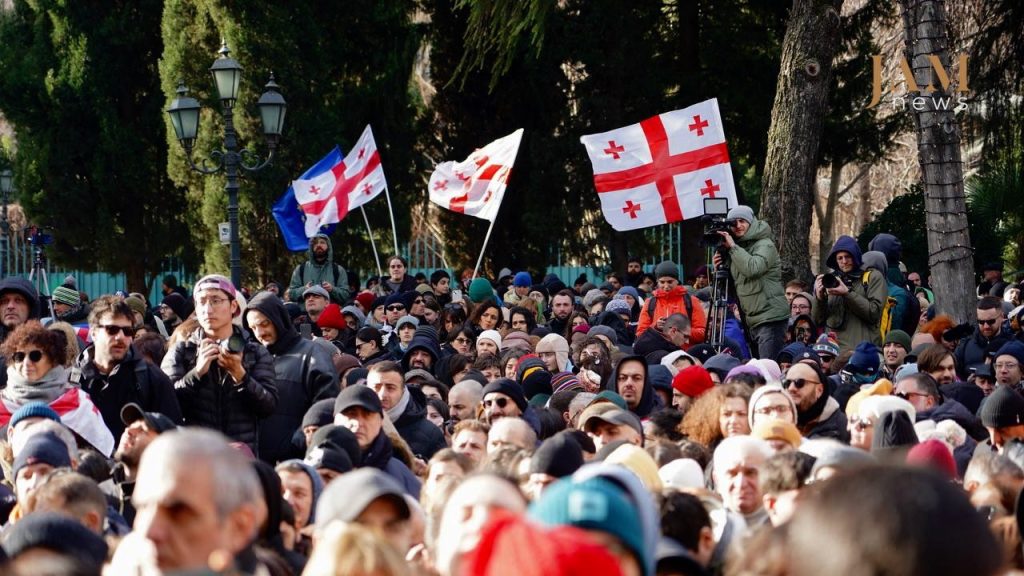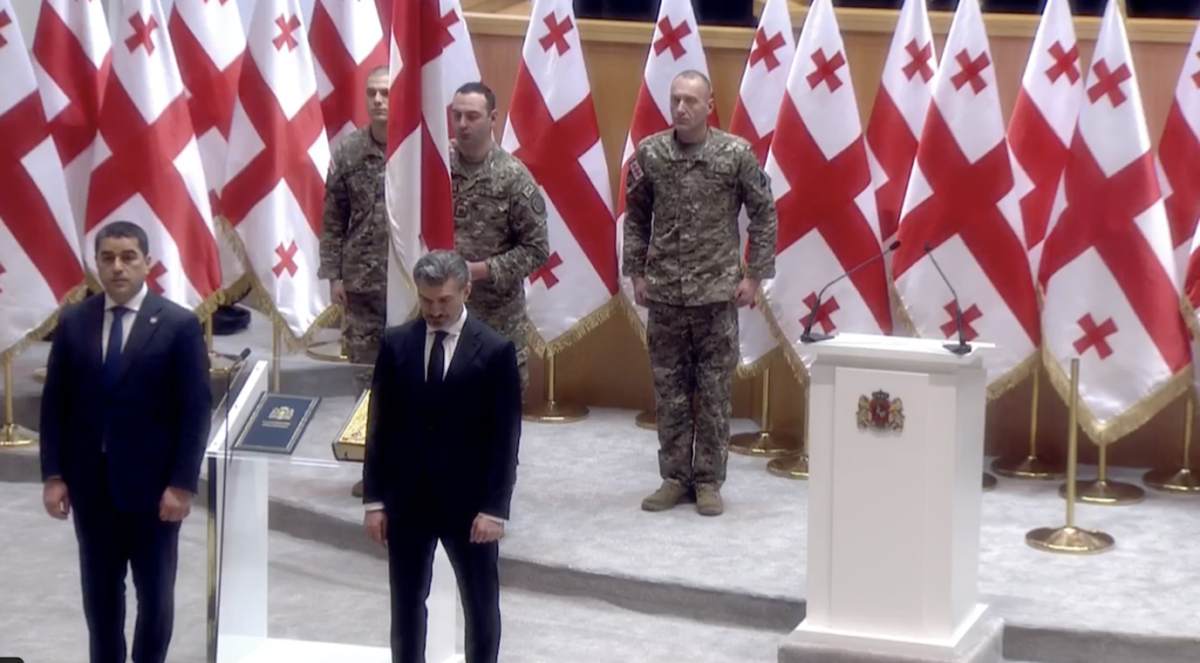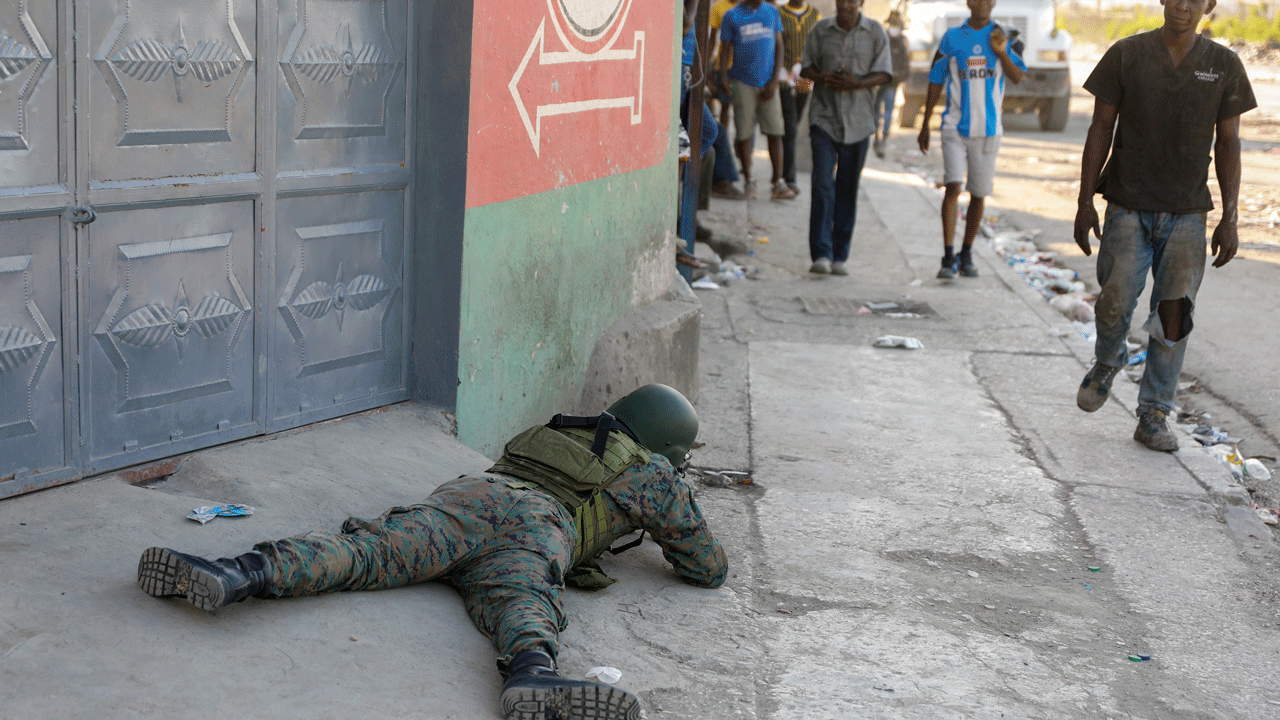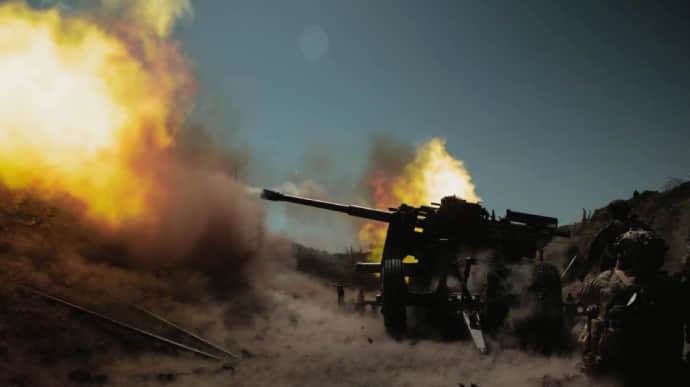Georgia’s pro-Western president leaves palace. What does this mean for the protests?
In Tbilisi's streets, every passing car honks for the protesters. In the presidential palace, the lights are now dark. Georgia's crisis enters a new phase.


Georgia’s month-long protests mark a watershed moment that could end the Georgian Dream party’s decade-long grip on power. Unlike previous protest movements, this wave has triggered an unprecedented alliance of public demonstrations, business sector resistance, and international sanctions that leaves the government increasingly isolated.
On 29 December, as protests entered their 32nd day, the crisis deepened when President Salome Zourabichvili, viewed as the legitimate president by 46% of Georgians, relocated from her residence, vowing to continue serving as president until new parliamentary elections are held.
Meanwhile, the ruling Georgian Dream party, whose legitimacy is questioned by 61% of Georgians, installed their own president, former football player Mikheil Kavelashvili. He is viewed as legitimate by only 22% of the population.
This move, rather than dampening protest momentum, has only highlighted the growing divide between a government clinging to power and a population demanding change.
What’s next for Georgia after Zourabichvili, who called herself the sole remaining legitimate institution, loses her protection? To understand, let’s have an overview of the first month of protests.

How the crisis in Georgia unfolded
The immediate trigger for these protests was the ruling Georgian Dream party’s announcement to suspend EU integration on 28 November. While technically, they suspended it until 2028, Georgians understand this as a permanent departure from the European path – implementing necessary reforms would mean the party’s loss of power. They cannot openly reject EU integration because they rule over a consistently pro-EU population, with support hovering around 80-85%.
The Georgian Dream’s rule has operated as a Trojan horse project of the Kremlin, and a remarkably successful one.
This happened partly because of a false sense of security – many believed Georgians were simply too pro-Western for any government to redirect them into Russia’s orbit. Bidzina Ivanishvili, the Russian-made oligarch behind the ruling party, only revealed his grand plan after capturing all state institutions, and when Russia’s full-scale invasion of Ukraine made it difficult to maintain a European facade.
Then came the Kremlin-inspired Foreign Agents law – actually two attempts at it – which essentially declares even animal shelters receiving anonymous donations from abroad as national traitors and foreign spies, in a country where businesses already fear funding government opponents lest they face overnight shutdown.
Georgians have been protesting since mid-April. The spring protests felt like a national awakening, with older generations comparing it only to the national liberation struggle of the 1980s. When the law passed anyway, people shifted focus to unseating the government in October’s elections.
Despite growing recognition that Georgian Dream’s Russian nature made peaceful concession unlikely, several factors fed hope they couldn’t cheat:
- the momentum of change at home
- Western frustration with Georgian Dream
- the possibility of countering known fraud tactics through high turnout
- the military’s lack of regime support
- and the likelihood of security forces’ resistance if actual Russians intervened.
The regime did rig the October parliamentary elections anyway, and the OSCE/ODIHR final report, while not entitled to name the elections illegitimate, essentially did just that.
A period of post-election shock followed, with uncertainty about protest strategy. Public anger ran high, but street protests remained modest, confused, and exhausted, until the next catalyst — the government’s U-turn on EU integration on 28 November, which led hundreds of thousands to take to the streets.
How are these protests different?
As opposed to the protests sizzling since mid-April, they erupted simultaneously in cities and towns across Georgia, rather than following Tbilisi’s lead as usual, and the atmosphere carried unprecedented anger — this time, the regime could not placate anyone with tactical concessions or electoral promises.
Crackdowns began the very first evening, and unlike previous protests, police aimed to punish protesters, not just clear Rustaveli Avenue. The 30 November crackdown saw unprecedented police violence, sending a clear message that protesters now risked not just arrest, but their lives.
However, instead of suppressing dissent, this brutality catalyzed broader resistance, losing the government’s key supporters and uniting previously disparate opposition groups. The regime soon discovered that neither Titushky (regime thugs) nor torture, arbitrary kidnappings, or arrests could deter the protesters.




